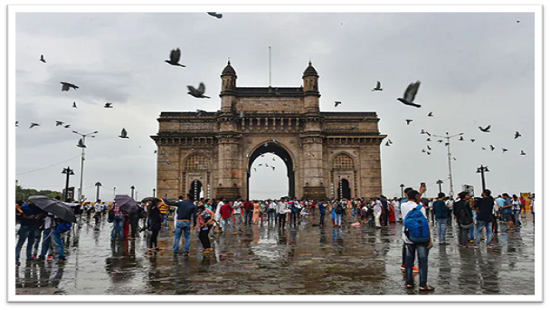
Changing Skies, Shifting Seasons – Maharashtra’s 24 Hour Weather Outlook
India’s weather maps this week paints a picture of contrasts. As northern states prepare for the onset of winter, southern India continues to witness late-season rainfall, while Maharashtra stands at the intersection of both—heat, humidity, and unexpected rain. These sudden shifts are not just about temperature changes but reflect the complex interaction of atmospheric patterns that define India’s post-monsoon transition.
Although the India Meteorological Department (IMD) has officially declared the withdrawal of the southwest monsoon from Maharashtra, weather systems over the Arabian Sea continue to influence parts of the state. This has led to an unusual mix of weather conditions—ranging from light rainfall and thunderstorms in certain districts to dry, oppressive heat in others.
Uneven Weather Patterns Across Maharashtra
According to the IMD’s Mumbai division, rainfall is likely to persist in regions such as South Madhya Maharashtra and Marathwada, accompanied by gusty winds. The skies over parts of Konkan and Madhya Maharashtra will remain partly cloudy, and isolated showers with thunder have been forecast. However, much of central and northern Maharashtra will continue to experience the “October heat,” with temperatures rising sharply during the afternoon.
In Mumbai and its suburbs, the temperature surge has been particularly noticeable. The rise in humidity, combined with clear skies, has made daytime conditions uncomfortable for citizens. Health experts and meteorologists alike are urging residents to stay hydrated and avoid direct sunlight during peak hours.
Monsoon Withdrawal and Atmospheric Dynamics
The IMD’s Pune branch confirmed that the southwest monsoon has completely withdrawn from Maharashtra and Goa. Apart from a few patches in Gadchiroli, the state has experienced dry conditions for over three days. This year, the monsoon lasted 141 days, which aligns with the typical seasonal duration.
The retreating monsoon’s southern boundary currently stretches across Karwar, Kalaburagi, Nizamabad, and Guwahati. With these indicators, meteorologists expect the monsoon to withdraw from the remaining parts of the country within the next 48 hours. The completion of this withdrawal signals the beginning of a brief transitional phase before winter sets in.
Short-Term Forecast and Cyclonic Activity
For the next 24 hours, rain is expected in districts like Ratnagiri, Sindhudurg, Satara, Sangli, Kolhapur, Akola, and Amravati. Experts attribute this activity to a cyclonic circulation developing over the central-west Arabian Sea. This system could strengthen into a low-pressure area, affecting coastal regions including Lakshadweep, Kerala, and Karnataka. Its extended influence may bring intermittent rainfall to parts of Maharashtra as well.
Such interactions between retreating monsoon winds and new low-pressure formations are characteristic of India’s autumn weather cycle. They play a crucial role in maintaining soil moisture levels, benefiting crops such as sugarcane and groundnut that thrive in post-monsoon conditions.
Nationwide Weather Snapshot
Elsewhere in the country, a contrasting pattern has emerged. The northern states are witnessing a rapid dip in temperature as cold winds sweep through the Himalayas. Regions of Uttarakhand, Himachal Pradesh, and Jammu and Kashmir have already reported cooler mornings and evenings, while plains states like Uttar Pradesh and Rajasthan are beginning to feel the first hints of winter.
Meanwhile, southern and coastal states are experiencing light to moderate rainfall. According to private weather agency Skymet, areas such as Odisha, coastal Andhra Pradesh, Telangana, Kerala, Tamil Nadu, and the Andaman and Nicobar Islands are likely to see scattered showers over the next 24 hours.
Understanding the Transition
The weather fluctuations observed across India are part of the larger climatic realignment that occurs every October. The monsoon’s retreat does not signify an abrupt end but a gradual shifting of wind and pressure systems. This phase also highlights the importance of regional forecasting, as local variations can significantly impact agriculture, energy consumption, and public health.
For Maharashtra, this transition means vigilance. While farmers in southern districts may benefit from the late rainfall, urban centers such as Mumbai and Pune need to prepare for fluctuating heat and humidity levels.
The Broader Outlook – Balancing Nature’s Extremes
The coming days will continue to bring varied weather across India. As Maharashtra moves beyond the monsoon’s shadow, the combination of retreating rains, residual humidity, and rising heat underscores the dynamic nature of India’s climate.
This year’s weather cycle, lasting 141 days of monsoon and now progressing toward winter, is a reminder of both resilience and adaptation. Whether it is a farmer waiting for the final spell of rain or a commuter enduring the October heat, the changing sky over Maharashtra reflects the ongoing dialogue between nature and the people who live beneath it.




